*NURSING > CASE STUDY > COVID-19 UNFOLDING Clinical Reasoning Case Study (Part I) / COVID-19-case study. Part I: Emergency D (All)
COVID-19 UNFOLDING Clinical Reasoning Case Study (Part I) / COVID-19-case study. Part I: Emergency Department (ED) SKINNY Reasoning. John Taylor, 68 years old.
Document Content and Description Below
Part I: Emergency Department (ED) SKINNY Reasoning John Taylor, 68 years old Primary Concept Infection/Immunity Interrelated Concepts (In order of emphasis) • Clinical judgment NCLEX ... Client Need Categories Covered in Case Study NCSBN Clinical Judgment Model Covered in Case Study Safe and Effective Care Environment Step 1: Recognize Cues • Management of Care Step 2: Analyze Cues • Safety and Infection Control Step 3: Prioritize Hypotheses Health Promotion and Maintenance Step 4: Generate Solutions Psychosocial Integrity Step 5: Take Action Physiological Integrity Step 6: Evaluate Outcomes • Basic Care and Comfort • Pharmacological and Parenteral Therapies • Reduction of Risk Potential • Physiological Adaptation Initial Triage Assessment in ED Present Problem: John Taylor is a 68-year-old African-American male with a history of type II diabetes and hypertension who came to the emergency department (ED) triage window because he felt crummy; complaining of a headache, runny nose, feeling more weak, “achy all over” and hot to the touch and sweaty the past two days. When he woke up this morning, he no longer felt hot but began to develop a persistent “nagging cough” that continued to worsen throughout the day. He has difficulty “catching his breath” when he gets up to go the bathroom. John is visibly anxious and asks, “Do I have that killer virus that I hear about on the news?” Personal/Social History: John lives in a large metropolitan area that has had over three thousand confirmed cases of COVID-19. He has been married to Maxine, his wife of 45 years and is retired police officer and active in his local church. 1. What data from the histories are RELEVANT and must be NOTICED as clinically significant by the nurse? (NCSBN: Step 1 Recognize cues/NCLEX: Reduction of Risk Potential) RELEVANT Data from Present Problem: Clinical Significance: RELEVANT Data from Social History: Clinical Significance: 2. What additional clarifying questions does the triage nurse need to ask John to determine if his cluster of physical symptoms are consistent with COVID-19? 3. Based on the clinical data collected, identify what measures need to be immediately implemented using the following clinical pathway. 4. What type of isolation precautions does the nurse need to implement if COVID-19 is suspected? What specific measures must be implemented to prevent transmission? Type of Isolation: Implementation Components: 5. What are the six steps in the chain of infection? Apply what is known about COVID-19 to each step. Six Steps: Coronavirus COVID-19: 1.Infection agent 2. Reservoir 3. Portal of existance 4.Mode of transmission 5. Portal of entry 6. Susceptible host 7. Is this patient a susceptible host? What step in the chain of infection does proper isolation precautions impact? Why? Patient Care Begins: Current VS: P-Q-R-S-T Pain Assessment: T: 100.3 F/38.8 C (oral) Provoking/Palliative: “moving makes it worse” P: 118 (regular) Quality: “achy” R: 20 (regular) Region/Radiation: “all over” BP: 164/88 MAP: 113 Severity: 5/10 O2 sat: 92% room air Timing: continuous 1. What VS data are RELEVANT and must be NOTICED as clinically significant by the nurse? (NCSBN: Step 1 Recognize cues/NCLEX: Reduction of Risk Potential Reduction of Risk Potential/Health Promotion and Maintenance) RELEVANT VS Data: Clinical Rationale: 2. What body system(s) will you assess most thoroughly performing a FOCUSED assessment based on the primary/priority problem? Identify correlating specific nursing assessments. (NCLEX: Reduction of Risk Potential/Physiologic Adaptation) PRIORITY Body System: PRIORITY Nursing Assessments: Current FOCUSED Nursing Assessment: GENERAL SURVEY: NEUROLOGICAL: HEENT: RESPIRATORY: CARDIAC: ABDOMEN: GU: INTEGUMENTARY: 3. What assessment data is RELEVANT and must be NOTICED as clinically significant by the nurse? (NCSBN: Step 1 Recognize cues/NCLEX: Reduction of Risk Potential Reduction of Risk Potential/Health Promotion & Maintenance) RELEVANT Assessment Data: Clinical Rationale: 4. Interpreting clinical data collected, what problems are possible? Which problem is the PRIORITY? Why? (NCSBN: Step 2: Analyze cues/Step 3: Prioritize hypotheses/NCLEX: Management of Care) Hint *Problems: List all the potential medical diagnoses that could be going on *Priority Problem: From the list of potential problems what do you think the patient is experiencing? Problems: Priority Problem: Rationale: 5. What nursing priority(ies) and goal will guide how the nurse RESPONDS to formulate a plan of care? (NCSBN: Step 4 Generate solutions/Step 5: Take action/NCLEX: Management of Care) Nursing PRIORITY: (Nanda) Maintaining pt airway GOAL of Care: (NOC) Clear lung sounds throughout, decreased shortness of breath Nursing Interventions: Rationale: Expected Outcome: Caring and the “Art” of Nursing 6. What is the patient likely experiencing/feeling right now in this situation? What can you do to engage yourself with this patient’s experience, and show that they matter to you as a person? (NCLEX: Psychosocial Integrity) What Patient is Experiencing: How to Engage: Reflect on Your Thinking to Develop Clinical Judgment To develop clinical judgment, reflect on your thinking that was used to complete this case study by answering the following questions: What did you do well in this case study? What weaknesses did this case study identify? What is your plan to make any weakness a strength? How will you apply what was learned to future patients? [Show More]
Last updated: 1 year ago
Preview 1 out of 6 pages
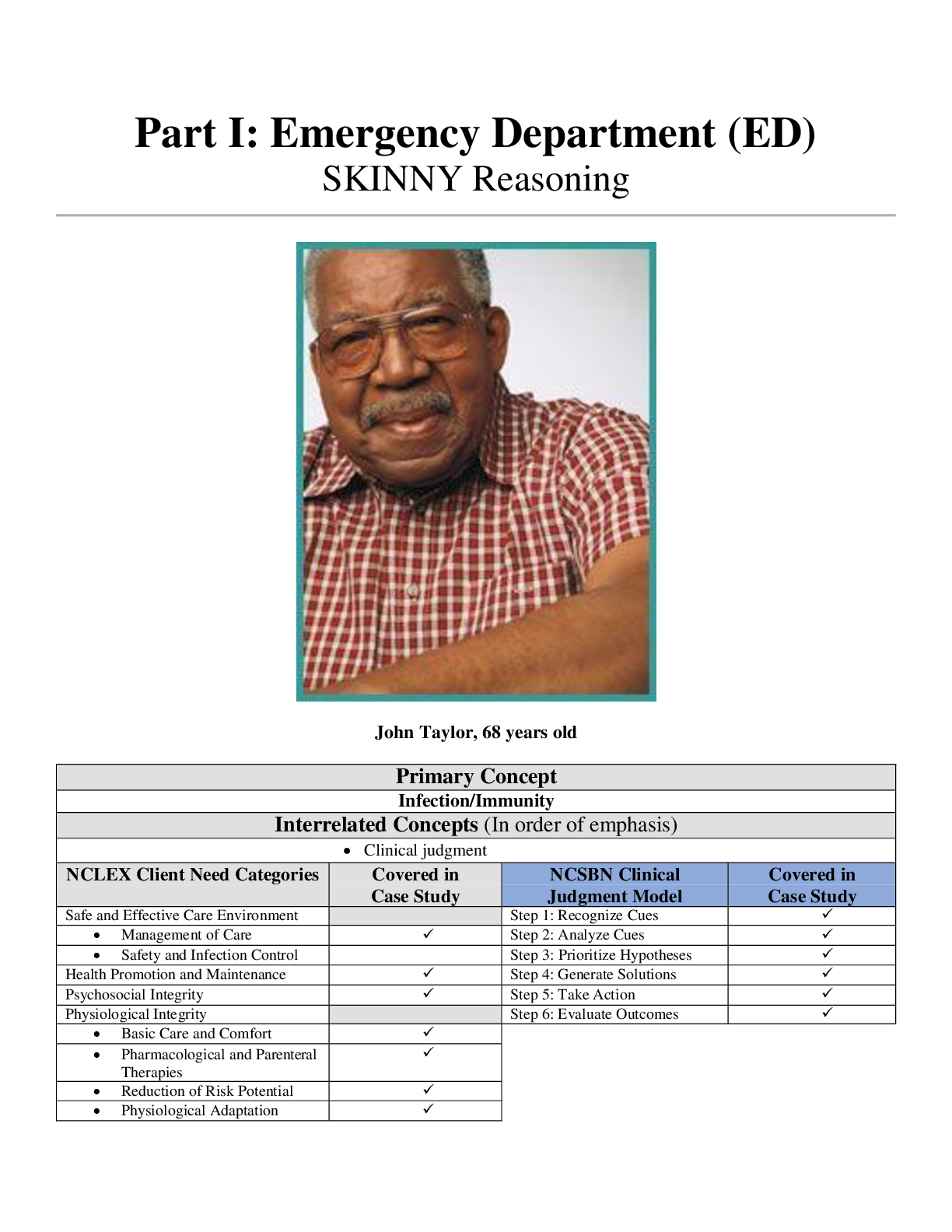
Reviews( 0 )
Document information
Connected school, study & course
About the document
Uploaded On
Mar 08, 2021
Number of pages
6
Written in
Additional information
This document has been written for:
Uploaded
Mar 08, 2021
Downloads
0
Views
83

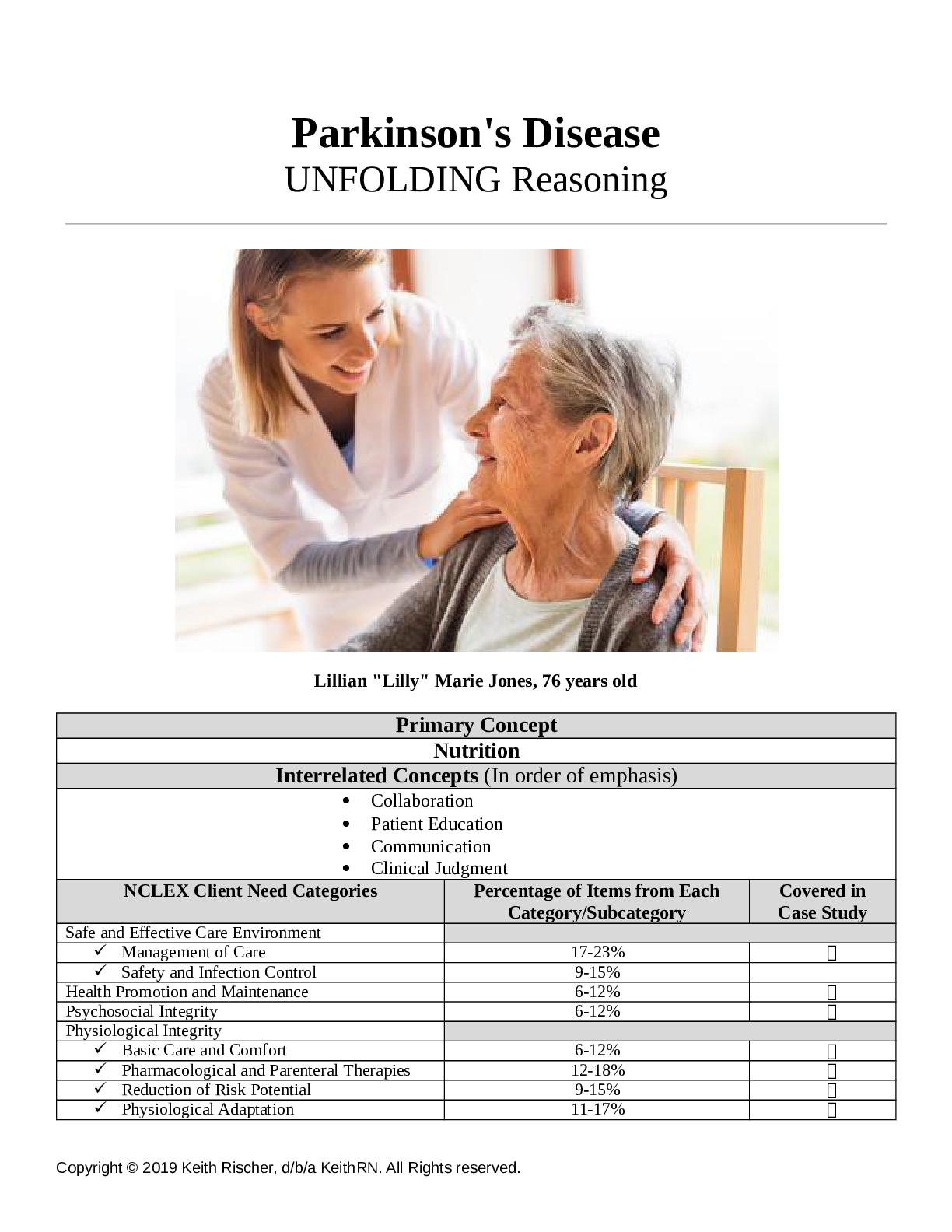
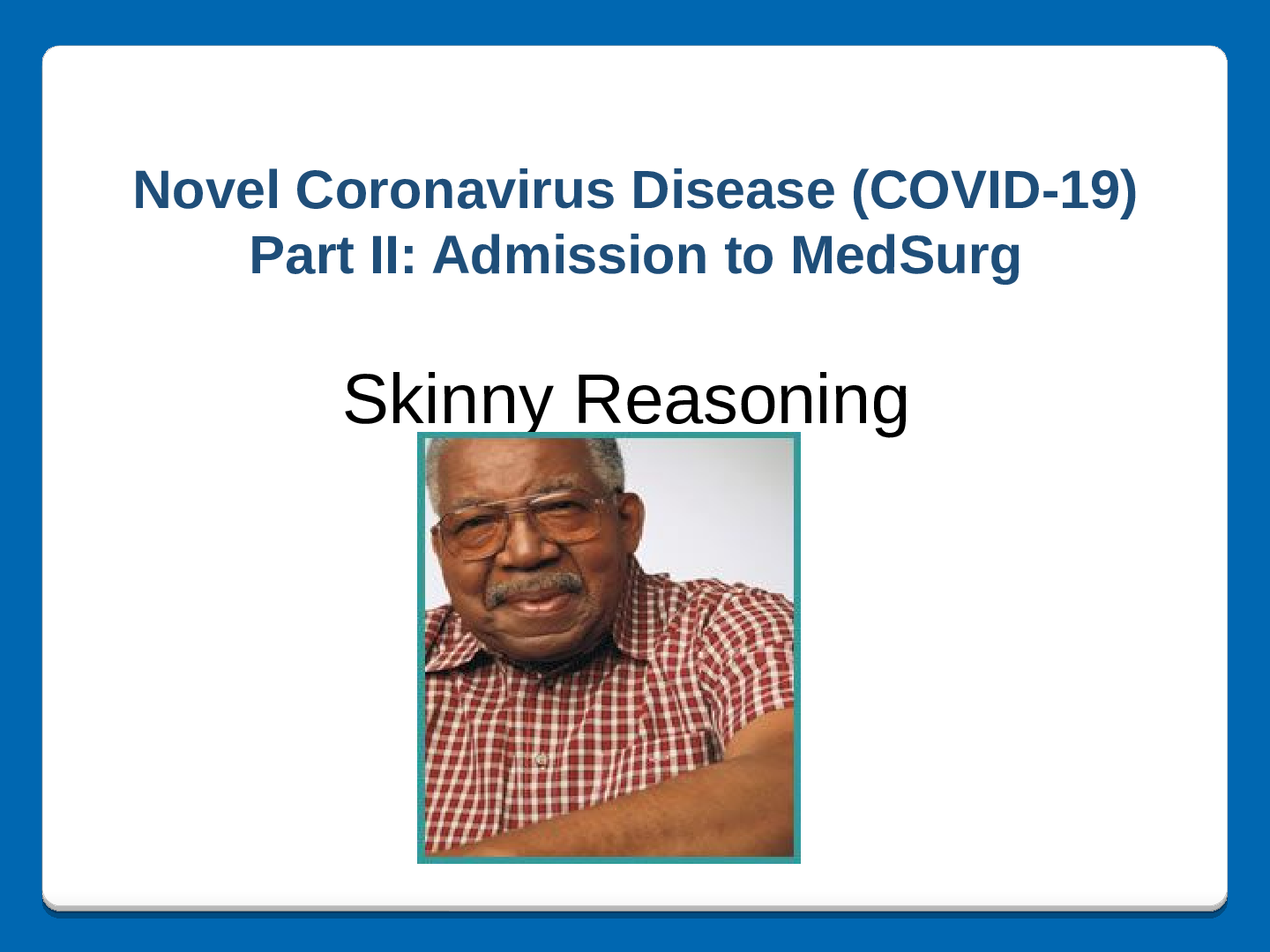
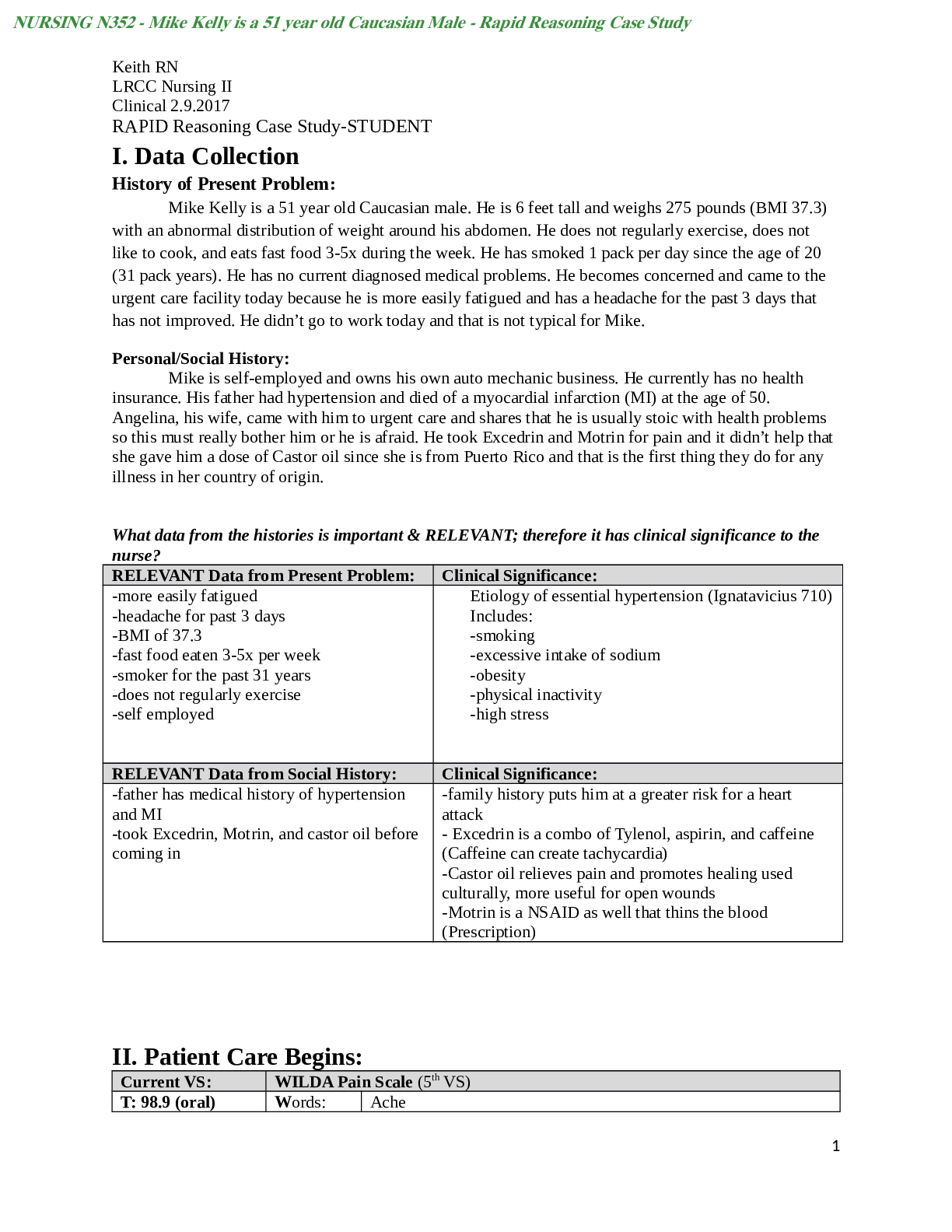
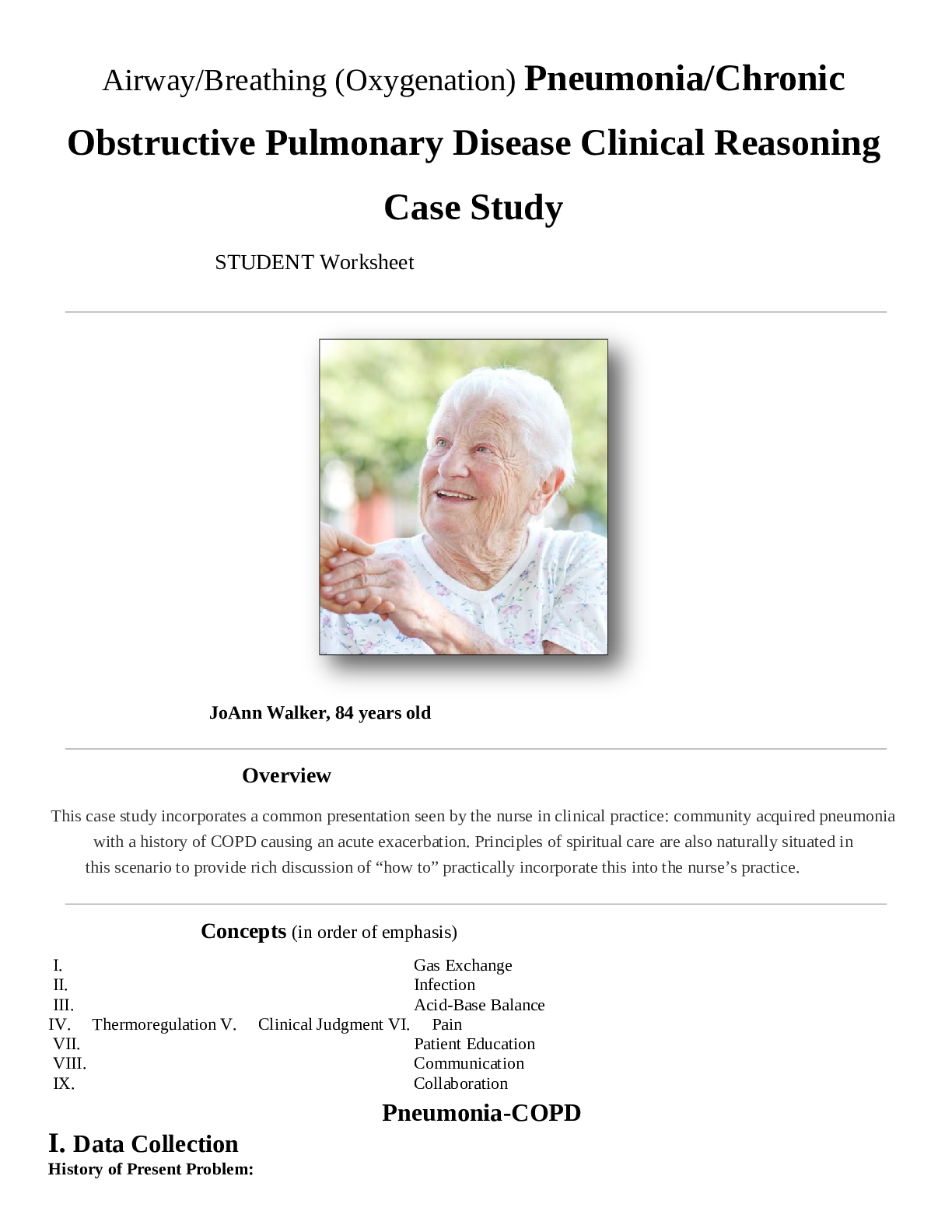
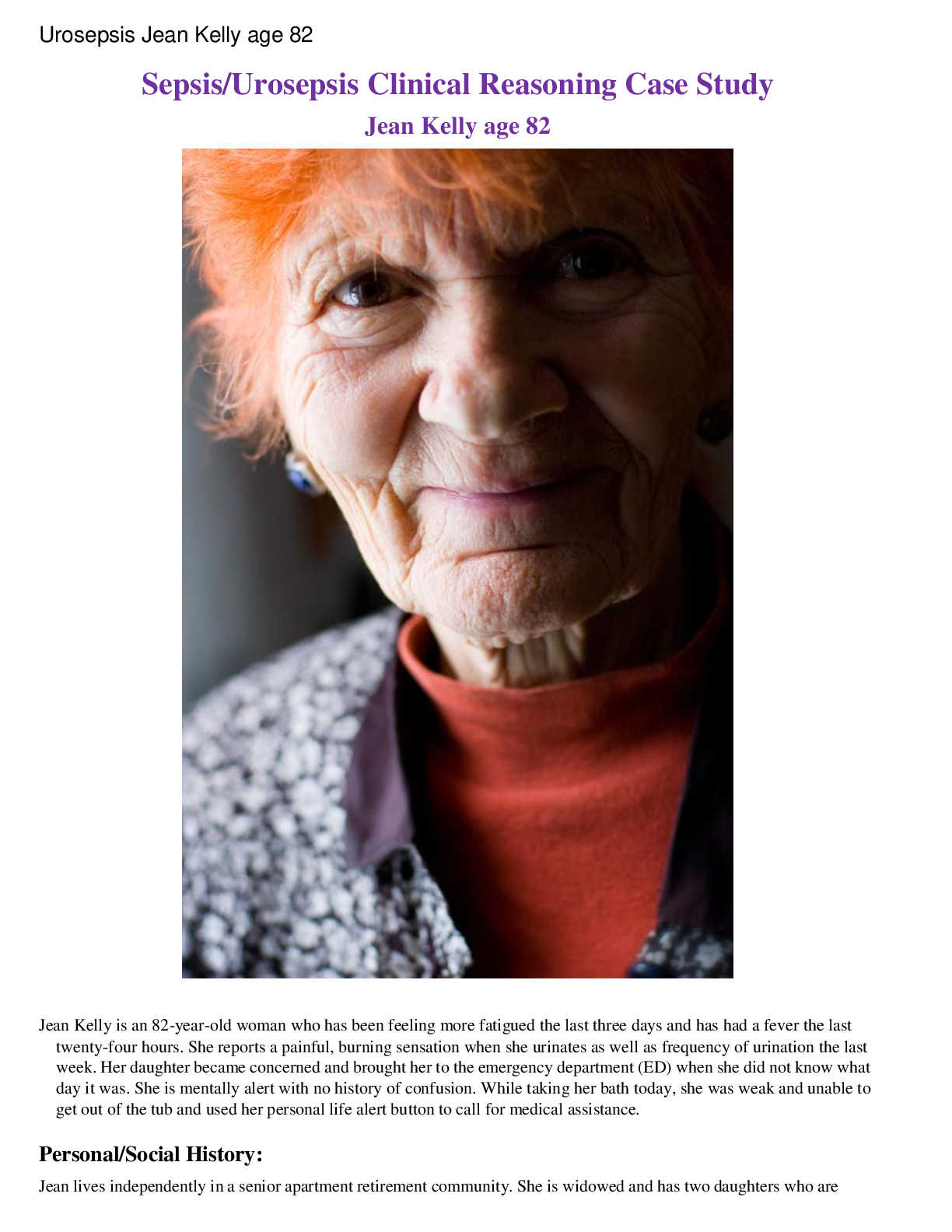







.png)

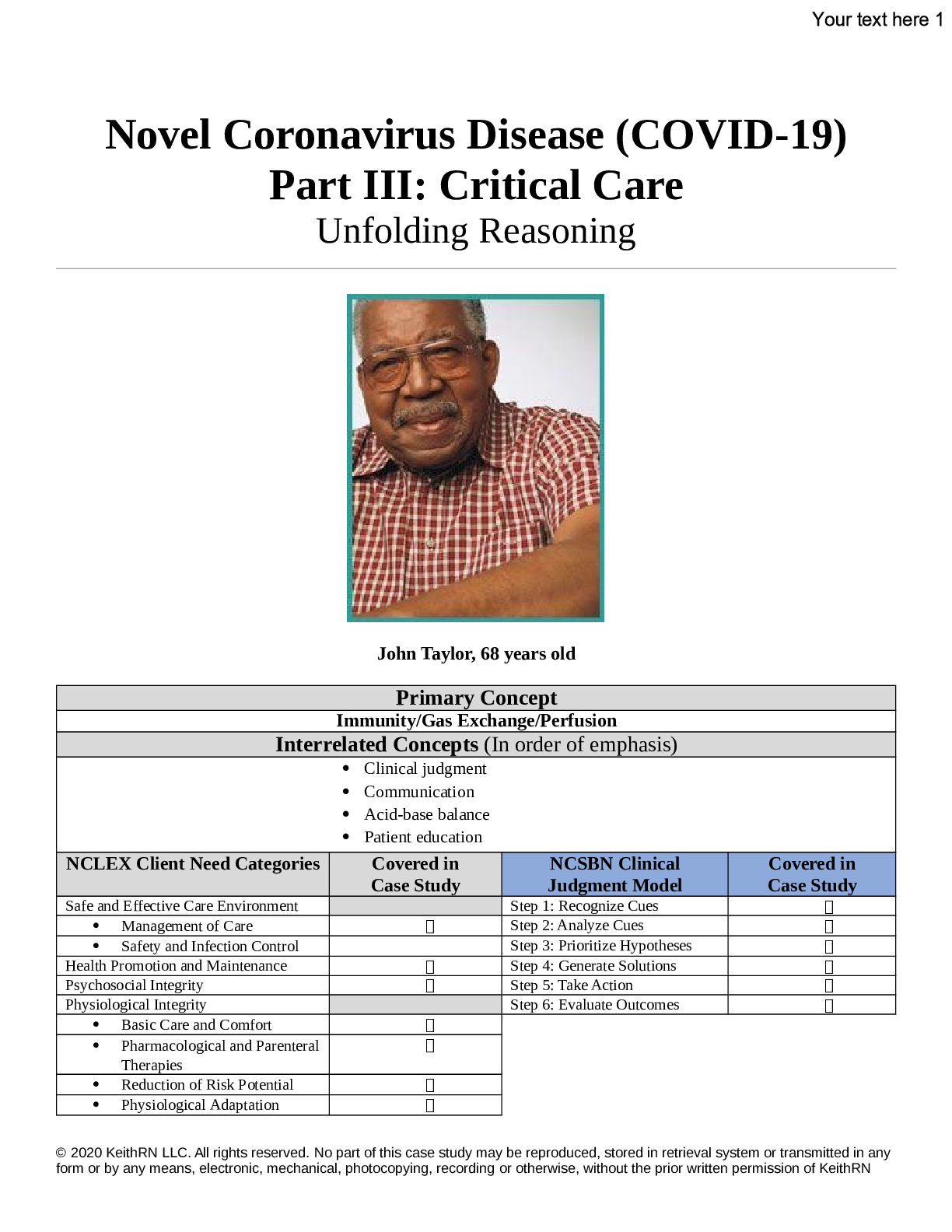

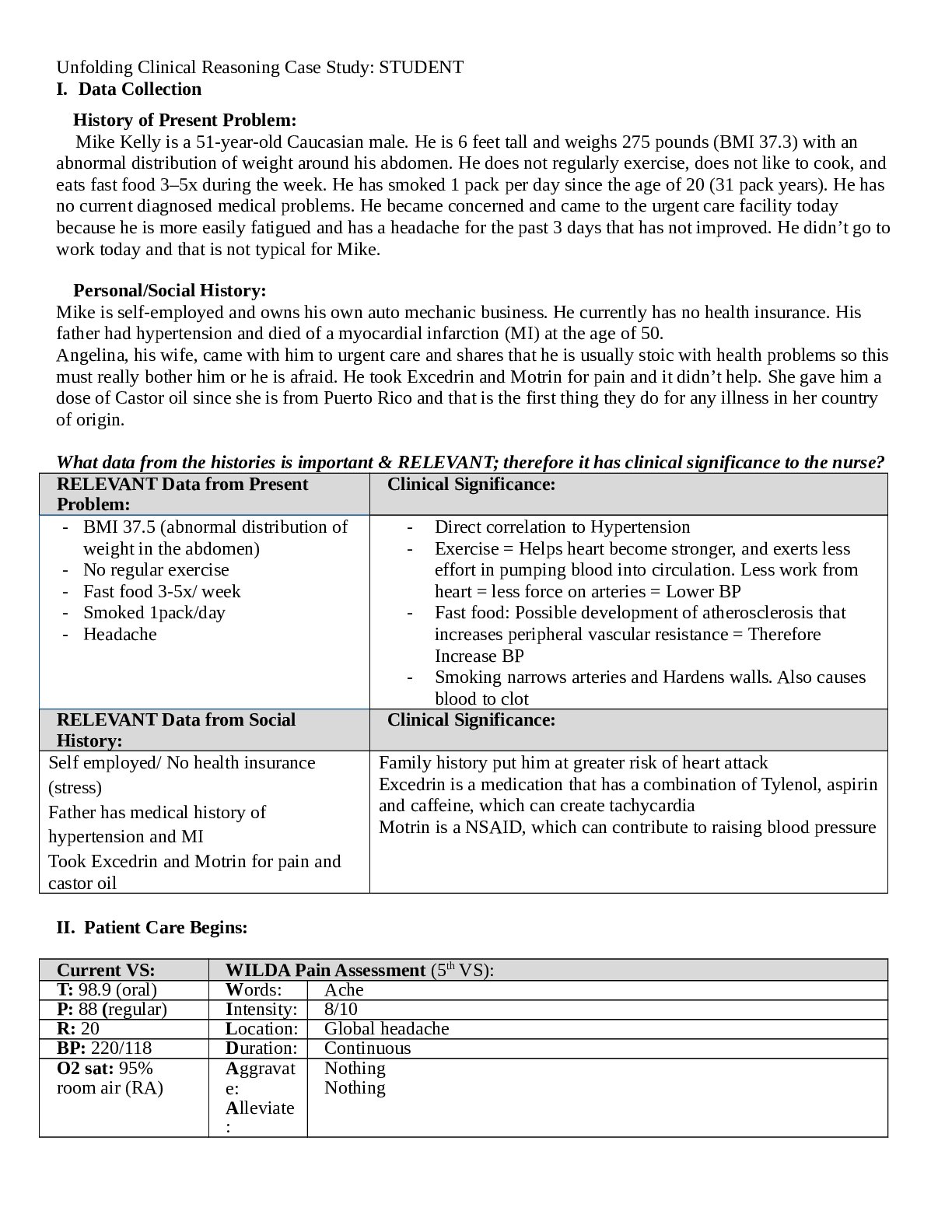
 PneumoniaChronic.png)








